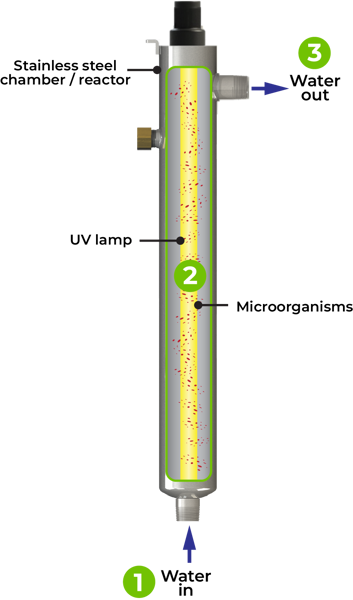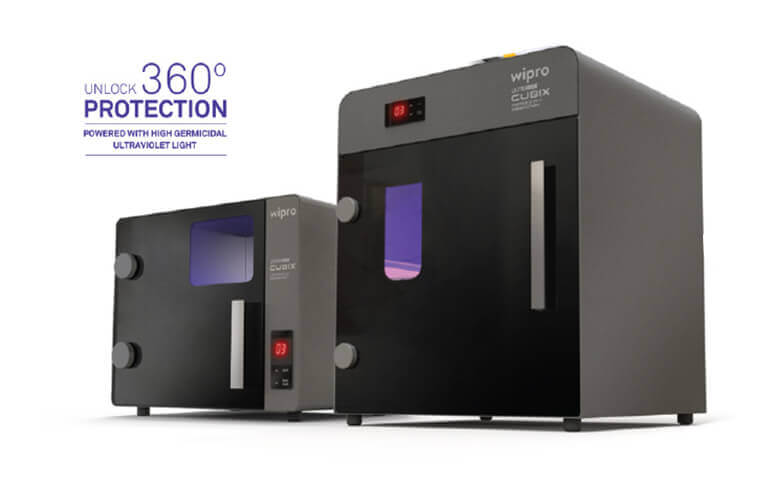Top Guidelines Of Uvc Light
Top Guidelines Of Uvc Light
Blog Article
The smart Trick of Uvc Light That Nobody is Discussing
Table of ContentsNot known Details About Uvc Light Uvc Light Fundamentals ExplainedOur Uvc Light StatementsThe Definitive Guide for Uvc LightThe 4-Minute Rule for Uvc LightThe Ultimate Guide To Uvc Light
A brand-new kind of ultraviolet light that might be risk-free for individuals took much less than five minutes to decrease the degree of interior air-borne microbes by more than 98%, a joint research study by scientists at Columbia College Vagelos University of Physicians and Surgeons and in the U.K. has actually discovered. Also as germs remained to be splashed right into the room, the degree remained extremely reduced as long as the lights were on.Till now these studies had just been performed in small speculative chambers, not in full-sized areas mimicking real-world conditions. In the present research, scientists at the College of St. Andrews, University of Dundee, University of Leeds, and Columbia University evaluated the effectiveness of far-UVC light in a huge room-sized chamber with the exact same air flow price as a regular office or home (regarding three air modifications per hour).
The efficiency of various methods to lowering interior infection levels is generally determined in regards to comparable air modifications per hour. In this research, far-UVC lights produced the equivalent of 184 equal air exchanges per hour. This exceeds any type of various other strategy to sanitizing busy interior spaces, where 5 to 20 comparable air changes per hour is the most effective that can be accomplished virtually.
The Facts About Uvc Light Uncovered

The major criteria of UV-C sanitation are wavelength, dosage, family member humidity, and temperature. There is no agreement regarding their optimal values, however, generally, light at a high dose and a spectrum of wavelengths containing 260 nm is preferred in an environment at space temperature level with reduced relative moisture. This light can be produced by mercury-vapour, light-emitting diode (LED), pulsed-xenon, or excimer lights.
UV-C disinfection systems have encouraging attributes and the possible to boost in the future. UV-C sanitation need to currently be taken into consideration for low-level rather than top-level sanitation.
An additional application emerged in 1910 when UV light was made use of to sanitize water. Nowadays, UV light is used for water, air, food, surface, and medical devices disinfection.
Uvc Light Fundamentals Explained
DNA, RNA, or healthy proteins of a micro-organism take in UV light, with a peak absorbance around 260 nm [6] This results in the interruption of DNA or RNA, bring about the inactivation of the micro-organism. UV-C-induced DNA disturbance typically is composed of the bonding of two neighbouring thymine (or cytosine) bases rather of the traditional connecting of a base with its corresponding base on the other hair.

The UV-C area is made use of for disinfection but there is no agreement on the specific ideal wavelength. Bacterial DNA and RNA have peak absorbances of light at 260265 nm and around 260 nm, specifically [6] As a result light at 260 nm can trigger one of the most disturbance. However, various micro-organisms are most at risk to somewhat different wavelengths.
Uvc Light - Questions
It also has a fringe benefit by minimizing photoreactivation with a reduction of photolyase [9] On the other hand, it has technological implications given that the overall energy of the beam is after that split over all present wavelengths. For that reason, a micro-organism that is susceptible to 254 nm light will certainly be inactivated a lot more by a light that discharges entirely light at 254 nm than a lamp that gives off a wavelength range at equivalent complete energy.
Direct exposure times of 1045 minutes for room sanitation and 25 s to 5 minutes for medical equipment were encountered in literary works.
Better, the outcome of a light reduces over time, so it is advised to calculate the dose at the end of light life, which is rep of a worst-case situation. The dosage additionally affects the amount of photoreactivation.
The influence of temperature depends on the light resource.
Uvc Light - Questions


This is recognized as much UV-C modern technology and is a relatively new this sanitation method with minimal expertise concerning its efficiency.
In study, the results on pulsed versus continual UV-C sanitation performance differ. When contrasting pulsed and constant light it is vital to keep various other variables such as wavelength and dose continuous.
The Definitive Guide to Uvc Light
In instance ozone is not needed for sanitation, a customized light can be used. For mercury-vapour lamps, drugged quartz glass or specialized soft glass can filter out short-wave UV-C light. For pulsed-xenon, doped quartz can be utilized as well [30] UV-C has promising features for disinfection such as automated disinfection, being much less time-consuming than commonly utilized guidebook or chemical disinfections, leaving no unsafe residuals, and being ecologically pleasant (if no mercury-vapour lamps are used) [31,32]
Report this page